How to Build a Community Website Using vBulletin (In 4 Steps)
Building a community website is a smart way to foster a culture of sharing, where your audience members form relationships with each other and with your brand. When done well, this kind of site can provide value and drive retention, but that can be easier said that done.
Forums are still one of the most popular options for building a community website, however, and are an option that’s both quick and easy if you have the right tools. vBulletin, for example, can be an effective solution for starting up a new forum. It can help you build a thriving community, where brand ambassadors are born.
This post will cover the pros and cons of building a community website. Then we’ll talk about what to consider when setting up this type of site, and walk through how to do so using vBulletin. Let’s get started!
The Pros and Cons of Building a Community Website
A community website is a place where your readers, customers, or other audience members can build relationships with each other and with your brand. It can be a resource for your customers, as well as a place where they can ask questions and get answers quickly.
Some benefits of building a community website include that it:
- Adds value for your audience
- Acts as a giant focus group
- Is where brand ambassadors are born
- Drives retention
Developing this kind of community is not always easy, however. It can be difficult to grow from the ground up, and you’ll need plenty of quality content and time. On the other hand, if you do put the required work into it, the advantages can far outweigh the initial investment.
If you have the kind of audience that can generate lots of interesting and quality content, starting up a community site may be worth it. This is especially true if you can base it around a topic that’s both relevant and popular, such as marketing, Search Engine Optimization (SEO), cooking, mechanics, etc.
What to Consider When Building Your Community Website
There are many aspects to consider when building your community website. For one, you’re going to have to start small and look for a long-term payoff. Most successful communities start out as small email lists, social media groups, forum threads, and so on.
Therefore, it can be best to get an email list going or create a social media group first, and start encouraging conversations. In addition, it may help to focus on a small niche at the start. If your topic is too broad, your community may not have enough in common to fond strong bonds.
It’s also important to have clear guidelines for your community, and lots of consistent content for members to share. Ultimately, it’s the quality of your content that will not only bring new members to your site, but also keep them coming back for more. As your community grows, members will begin adding their own content, but in the beginning it’s mostly up to you.
Most of all, you’ll want to be engaging and genuine in your interactions. People come to community websites to be with like-minded people, share their experiences, and have their questions answered. If you show members that you care, you increase your community’s chance for success.
An Introduction to vBulletin
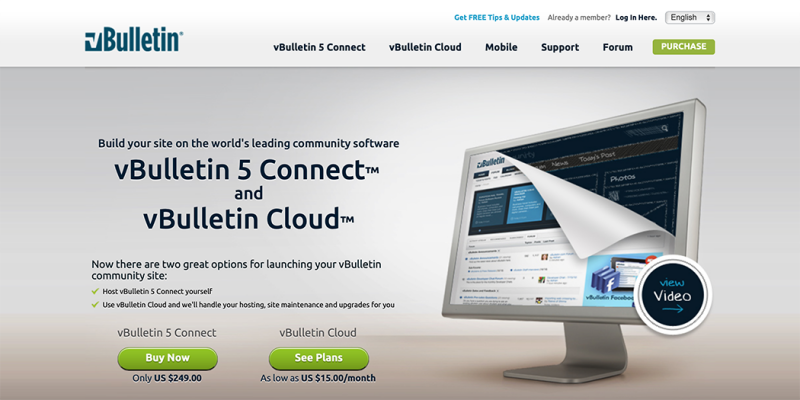
The final element to consider is your forum software. Building a forum from scratch is hard work, but you can get a head start with the right tool. There are plenty of options, and vBulletin is one of the best.
vBulletin is open-source forum software that can help you get your community website up and running. It’s easy to set up, has built-in SEO features, and is a low-cost option. Its developers also offer a host of add-ons, so you can expand your forum’s functionality. For a full list of features and support options, you can visit the visit the vBulletin forum.
How to Build a Community Website Using vBulletin (In 4 Steps)
While not the only option, forums are an ideal solution for building a community website. Your forum can quickly become a knowledge base for your business, a place for customer support, and a way for your audience to engage with one another. To get started with vBulletin, simply follow the four steps below.
Step 1: Download and Install vBulletin
The first thing you’ll need to do is download the software. To do that, you’ll want to choose a plan on the vBulletin website:
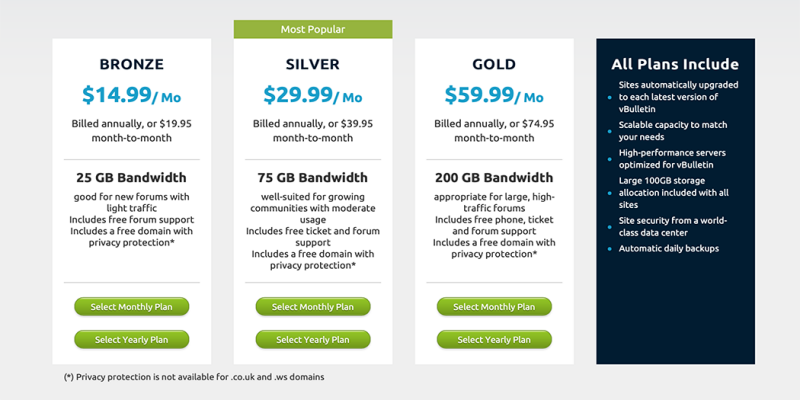
Select the option that’s best for you, and proceed to the payment screen. Afterwards, you’ll be able to download and install the software. Once the installation is complete, you’re ready to create your new forum.
Step 2: Set Up Your Forum
When you install the software, it will automatically set up a basic, default forum for you:
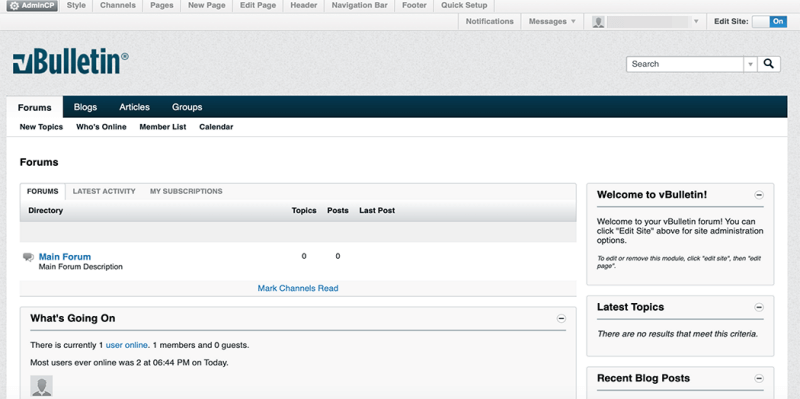
Click on AdminCP in the top-left corner of the screen, and you’ll be taken to the admin page where you can begin to tailor the forum to your specifications:
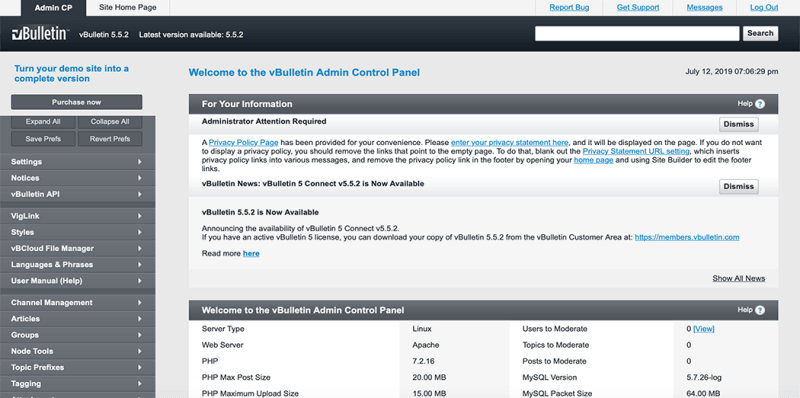
From this page you can set up new users, create groups, and manage your content. You can also customize your settings and preferences. You may want to spend some time looking everything over at this point, and familiarizing yourself with the basics of what vBulletin can do.
Step 3: Add Some Content
Once you’ve found your footing, you’ll be ready to add some engaging content to your forum. To do that, select New Topic:
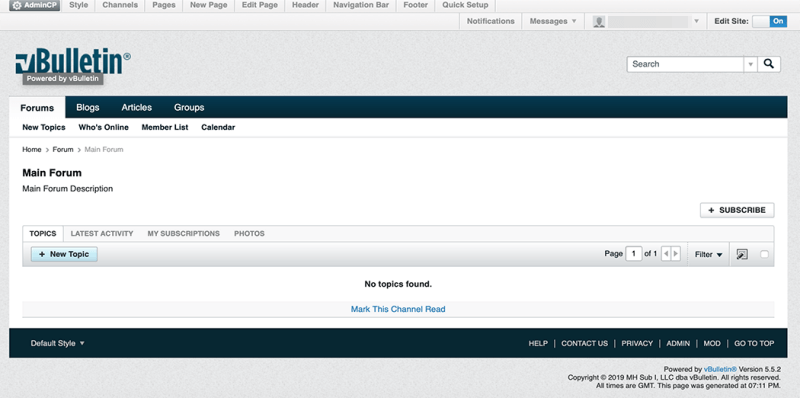
Fill in your topic’s subject, and use the editor to write your post:
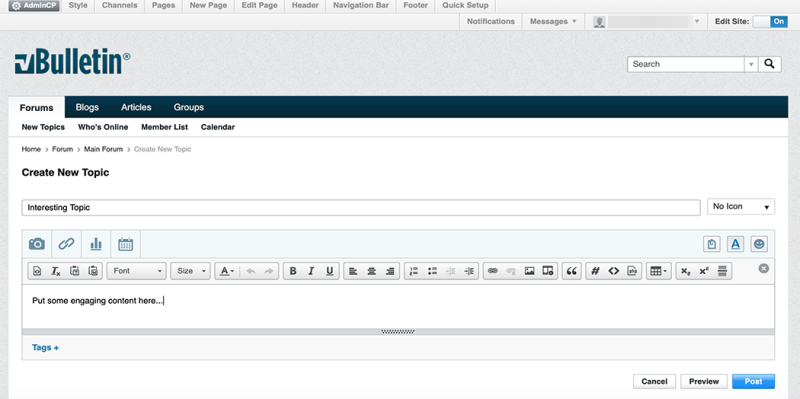
In your initial posts, try to provide some value for your target audience while also encouraging conversation. For inspiration, you may want to consider some blogging techniques to help you come up with engaging topics.
It’s also best to add as much content as you can to get things started. With vBulletin, you’ll be able to organize your content by categories and threads, so users can find what they need quickly.
Step 4: Customize Your Forum
Finally, you’ll also want to customize your forum to match your site’s branding and give it a unique appearance. Fortunately, there are a number of resources to help vBulletin users do just that.
To change the look and feel of your forum, click on the Style tab at the top of the screen next to AdminCP:
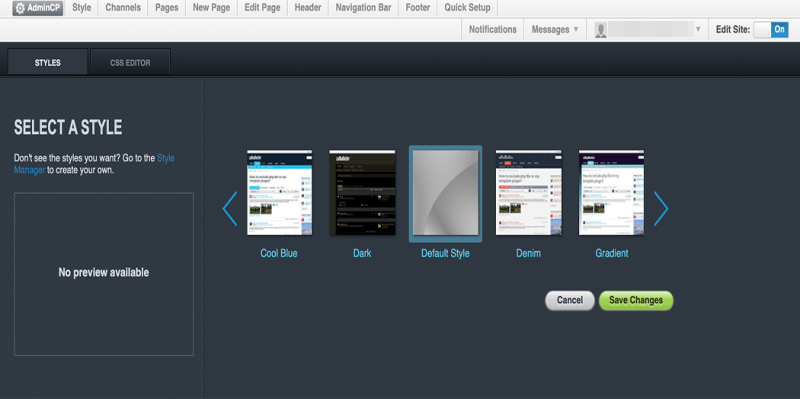
On this page, you can select a theme for your forum. You can also further customize it by adding modules to your pages:
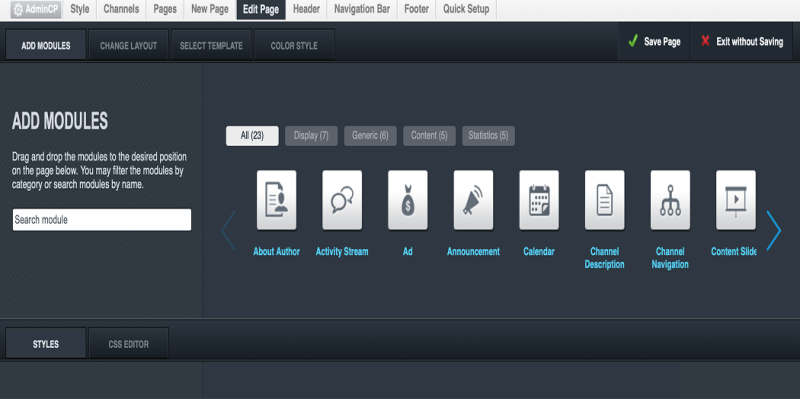
Since vBulletin is open-source software, developers are free to design their own themes and modules for it. Using these tools, you can tweak your community site to look and feel however you’d like.
Conclusion
Building a community website can provide value to your audience and keep them coming back for more. Using forum software such as vBulletin is an effective way to begin growing your community and brand.
To start a forum using vBulletin, just follow these four steps:
- Download and install vBulletin.
- Set up your forum.
- Add some content.
- Customize your forum.
Image credit: Free-Photos.


